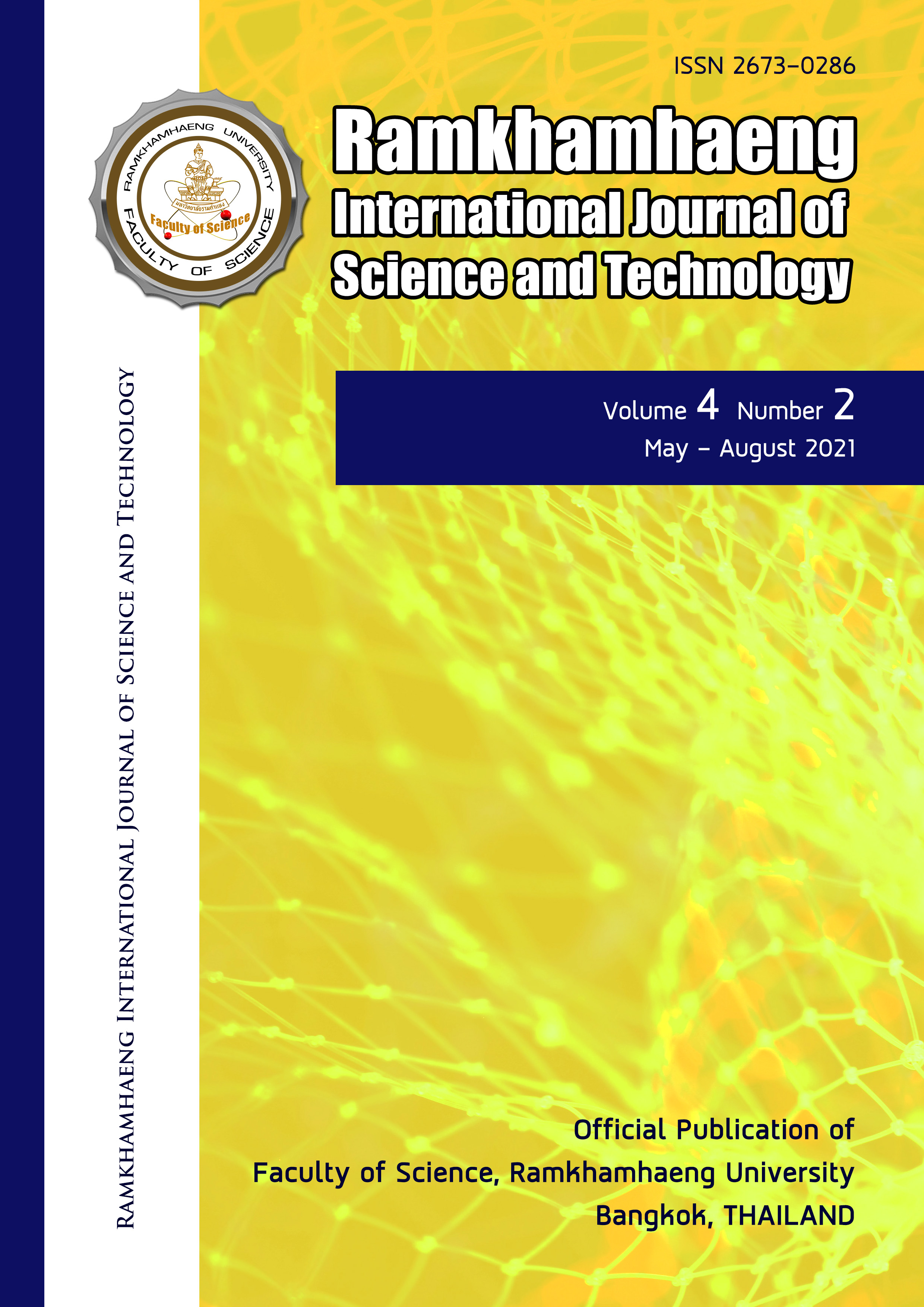Occurrence of microplastics in edible seaweeds from aquaculture
Keywords:
C. lentillifera, G. fisheri, marine debris, contamination, macroalgaeAbstract
Microplastics have been found to cling to seaweeds, which serve as a route for microplastic transfer into the marine food web and into human consumption. Because there is a lack of understanding about microplastics in edible seaweeds, two edible seaweeds from Thai aquaculture were researched. The edible red seaweed Gracilaria fisheri and the edible green seaweed Caulerpa lentillifera were used in this investigation. Microplastics were found in seaweeds in concentrations ranging from 16.46±2.56 to 181.73±86.42 particles per 100g wet weight. Microplastics in the size classes 100-500 and 501-1,000 m were abundantly found. This study identified a lot of red, black, and blue filamentous micorplastics. Because buoyant microplastics were abundant in the first meter water surface where G. fisheri were planted in a shallow water pond, the total accumulation of microplastics on G. fisheri was considerably higher than C. lentillifera (p<0.05). When compared to commercial seaweed Pyropia spp., our findings revealed a high abundance of microplastics. Consequently, water management is essential to reduce microplastic contamination in edible seaweeds. Further research is also needed to precisely detect their presence and measure their abundance.
References
Benjama O, Masniyom P (2011) Nutritional composition and physicochemical properties of two green seaweeds (Ulva pertusa and U. intestinalis) from the Pattani Bay in Southern Thailand. Songklanakarin Journal of Science and Technology 33(5):575–583
Benjama O, Masniyom P (2012) Biochemical composition and physicochemical properties of two red seaweeds (Gracilaria fisheri and G. tenuistipitata) from the Pattani Bay in Southern Thailand. Songklanakarin Journal of Science and Technology 34(2):223–230
Brown ES, Allsopp PJ, Magee PJ, Gill CIR, Nitecki S, Strain CR, McSorley EM (2014) Seaweed and human health. Nutrition Reviews 72(3):205–216
Eriksen M, Lebreton LCM, Carson HS, Thiel M, Moore CJ, Borerro JC, Reisser J (2014) Plastic pollution in the world’s oceans: more than 5 trillion plastic pieces weighing over 250,000 tons afloat at sea. PLoSOne 9(12):e111913
Grafton RQ, Daugbjerg C, Qureshi ME (2015) Towards food security by 2050. Food Security 7:179–183
Gutow L, Eckerlebe A, Gimenez L, Saborowski R (2015) Experimental evaluation of seaweeds as a vector for microplastics into marine foodwebs. Environmental Science & Technology. 50:915–923
Jambeck JR, Geyer R, Wilcox C, Siegler TR, Perryman M, Andrady A, Narayan R, Law KL (2015) Plastic waste inputs from land into the ocean. Science 347:768–771
Kooi M, Reisser J, Slat B, Ferrari FF, Schmid MS, Cunsolo S, Brambini R, Noble K, Sirks LA, Linders TEW, Schoeneich-Argent RI, Koelmans AA (2016) The effect of particle properties on the depth profile of buoyant plastics in the ocean. Scientific Reports 6:33882. doi:10.1038/SREP33882
Kumar CS, Ganesan P, Suresh PV, Bhaskar N (2008) Seaweeds as a source of nutritionally beneficial compounds—a review. Journal of Food Science and Technology 45:1–13
Lia Q, Feng Z, Zhang T, Ma C, Shi H (2020) Microplastics in the commercial seaweed nori. Journal of Hazardous Materials 388:122060, doi.org/10.1016/j.jhazmat.2020.122060
Mathalon A, Hill P (2014). Microplastic fibers in the intertidal ecosystem surrounding Halifax Harbor, Nova Scotia. Marine Pollution Bulletin. 81:69–79.
Neufeld L, Stassen F, Sheppard R, Gilman T (eds) (2016) The new plastics economy: rethinking the future of plastics. World Economic Forum. Cologny/Geneva, Switzerland
Seng N, Lai S, Fong J, Saleh MF, Cheng C, Cheok ZY, Todd PA (2019) Early evidence of microplastics on seagrass and macroalgae. Marine and Freshwater Research https://doi.org/10.1071/MF19177
Severini MDF, Villagran DM, Buzzi NS, Sartor GC (2019) Microplastics in oysters (Crassostrea gigas) and water at the Bahia blanca Estuary (Southwestern Atlantic): an emerging issue of global concern. Regional Studies in Marine Science 32:12.
Su L, Deng H, Li BW, Chen QQ, Pettigrove V, Wu CX, Shi HH (2019) The occurrence of microplastic in specific organs in commercially caught fishes from coast and estuary area of east China. Journal of Hazardous Materials. 365:716–724.
Wichachucherd B, Pannak S, Saengthong C, Rodcharoen E, Koodkaew I (2019) Correlation between growth, phenolic content and antioxidant activity in the edible seaweed, Caulerpa lentillifera in open pond culture system. Journal of Fisheries and Environment 43(2):66–75
Wright SL, Kelly FJ (2017) Plastic and human health: a micro issue? Environmental Science & Technology 51:6634–6647
Downloads
Published
Issue
Section
License
Copyright Notice: a copyright on any article in the published journal is retained by the Ramkhamhaeng International Journal of Science and Technology. Readers or Users grant the right to use of the Article contained in the Content in accordance with the Creative Commons CC BY-NC-ND license and the Data contained in the Content in accordance with the Creative Commons CC BY-NC-ND.



